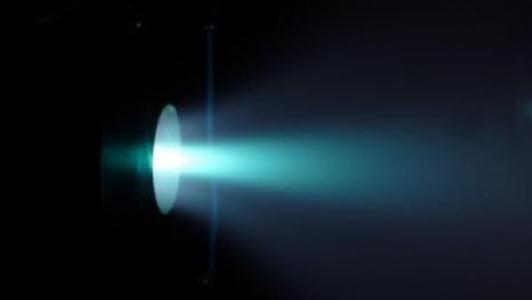Improvements in Helicon Antenna Thruster RF-plasma discharge coupling for its evolution towards space application.
Programme
GSTP
Programme Reference
GT17-134MP
Prime Contractor
SENER INGENIERIA Y SISTEMAS SA
Start Date
End Date
Status
Closed
Country
Spain

Objectives
The objective of the activity is the improvement of the current Helicon Antenna Thruster towards Space Applications focusing on diverse magnetic topologies
Description
ESA has already experienced the advantages of using electric propulsion (EP) technologies Earth Observation satellites (GOCE) and Telecommunication Satellites (ARTEMIS, Alphasat, Small GEO) and has already selected EP for future missions: Science Spacecraft BepiColombo for science; and NEOSAT and Electra for telecommunications.
A relatively new EP system currently under research and development in Europe called the Helicon Plasma Thruster, operates with the principle of helicon-type radio waves propagating along magnetic field lines to ionise propellant gas and accelerate the resulting plasma. This device creates thrust without electrodes or other erodible parts being immersed in the plasma that could otherwise degrade and hence limit the lifetime of the thruster. The predicted performance (currently being verified by laboratory testing in a suitable EP test facility) is characterised by a high specific impulse and a reasonable power to thrust ratio. ?
Furthermore the potential scalability of the concept, combined with the very long lifetime/total impulse, could lead to improved technical advantages for different missions requiring low, medium or high thrust. In particular, missions in support of large-scale robotic or human exploration beyond LEO have been highlighted to benefit significantly from this innovative technology. Furthermore constellations of satellites used for providing internet could also benefit from this technology.
?
An initial thruster concept based on state-of-the-art RF-plasma simulations and experiments have confirmed the promising theoretical performances predicted by the simulation analysis.
This activity will focus on: ?
- Requirements definition.
- System Development and validation
- Physical processes analysis and modelling
- Thruster analysis and design
- Antenna design trades and optimisation
- RF Generation and Power Unit analysis and design
- Thruster system assembly and integration
- System Test
Application Domain
Generic Technologies
Technology Domain
19 - Propulsion
Competence Domain
7-Propulsion, Space Transportation and Re-entry Vehicles
Initial TRL
TRL 3
Target TRL
TRL 5
Achieved TRL
TRL 5
